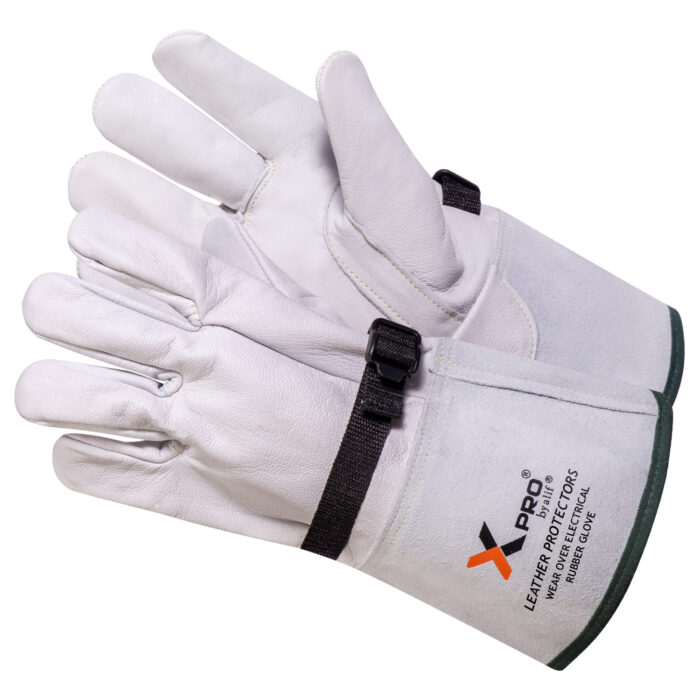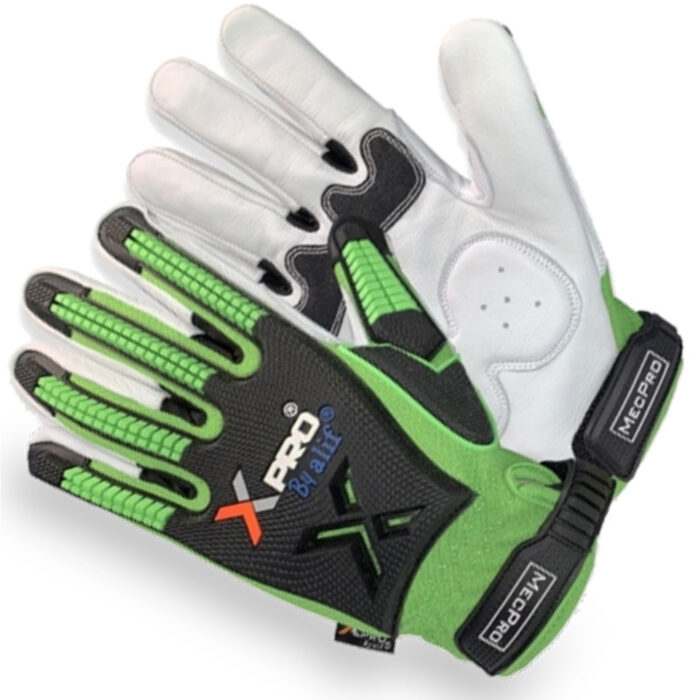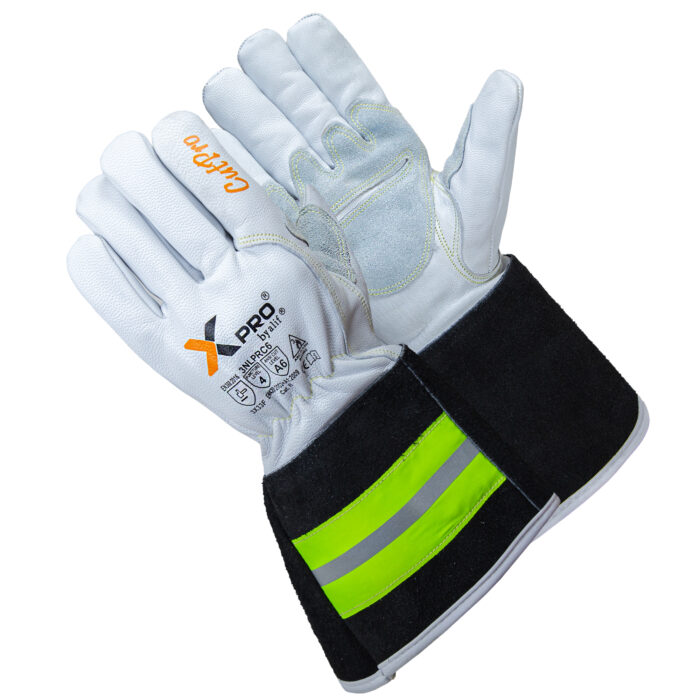XPRO®4017C4 Goatskin Cut and heat Resistance welding Gloves
Brand: XPRO®
Alif-4017C4
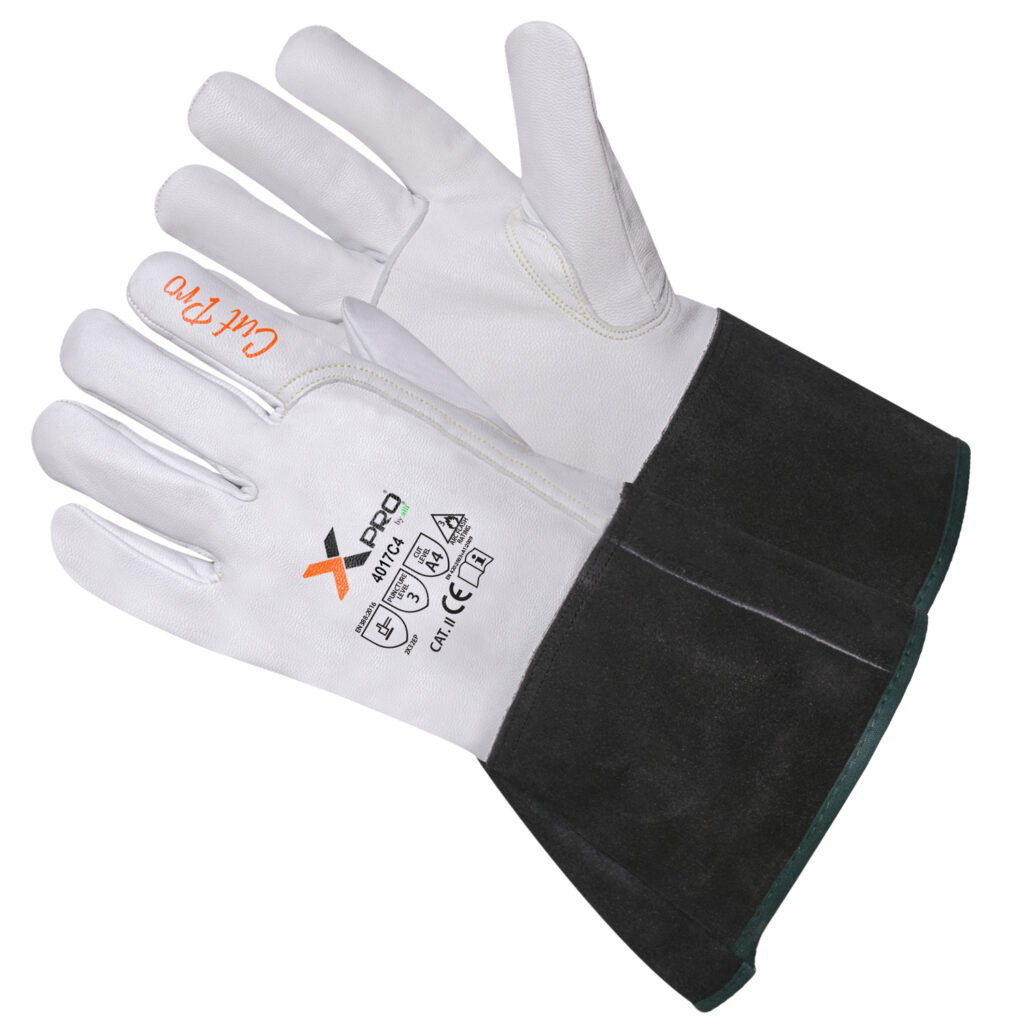
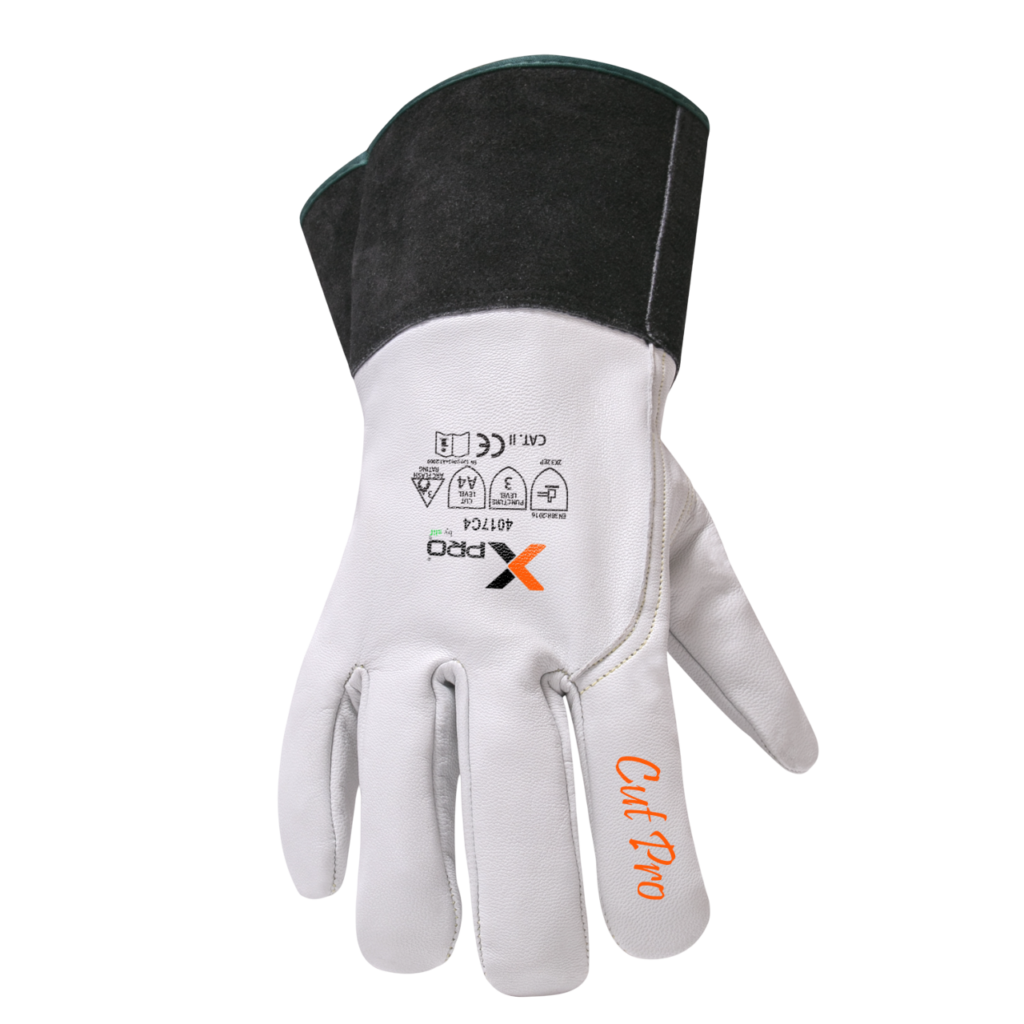
Brand: XPRO®
XPRO®4017C4 Goatskin Cut and heat Resistance welding Gloves
Alif-4017C4
Goat Grain Leather Welding Glove with Black Cow Split Leather Gauntlet and inside lined with 100% Kevlar®/Glass Filament (Cut Level A4) and Set-in keystone thumb for greater comfort. Elasticized backs for a snug fit.
Price:
Performance ratings
EN 388:2016 3X33F
EN 388 2016 Results: 3X33F
Abrasion: 3
Cut (Coupe Test): X
Tear: 3
Puncture: 3
Cut (TDM-100 Test): F
EN 388 is a European Standard. Cut Level is determined by the number of cycles it takes a spinning circular blade, that is pulled across the material under a constant weight of 500 grams, to cut the fabric. As the number of cycles increase, so does the glove’s ratings.
EN 407 41XX4X
Protective Gloves Against Thermal Hazards: 41XX4X
Resistance to Flammability – 4
Contact Heat Resistance – 1
Convective Heat Resistance – X
Radiant Heat Resistance – X
Resistance to Small Splashes of Molten Metal – 4
Resistance to Large Splashes of Molten Metal – X
EN 407 is a general European standard designed to be used for any glove that is to be sold as providing protection against thermal hazards. All six tests are graded on a scale from 0 to 4, with 0 signifying that the glove failed the test, and 4 demonstrating it has achieved the maximum resistance in that specific area.
ABRASION 5
Abrasion Level: 5
Test Method: ASTM D3389-10
The ISEA 105-2016 standard outlines test methods for abrasion and is scored from 0-6. The ASTM D3389-10 is used for uncoated gloves, and the end point (failure) is the number of abrasion cycles when the first thread or yarn is broken. The larger numbers of cycles indicate greater abrasion resistance of the product and a higher Abrasion Level.
Cut A4
Cut Level: A4
New edition ISEA 105-2016 outlines a new test method for determining cut scores and a revised scale from A1-A9.
Puncture 4
Puncture Level:
The ISEA 105-2016 blunt force puncture testing uses a probe to simulate a tear or burst hazard. The test measures the amount of force needed for a blunt probe to pierce through PPE material. Results are given in Newtons, which is converted into a 1-5 scale and spans from 10 newtons (Level 1) to 150+ newtons (Level 5) of puncture resistance.
ARC FLASH 3
EN ISO 21420:2020
The EN ISO 21420:2020 standard outlines the general requirements and test methods for protective gloves. It covers aspects such as design, construction, comfort, efficiency, and safety, ensuring gloves meet necessary performance criteria. This standard applies to all protective gloves, including those used in industrial environments, and replaces the previous EN 420:2003 standard.
European conformity
The CE mark (Conformité Européenne) indicates that a safety product meets the essential health, safety, and environmental protection requirements of the European Economic Area (EEA). It ensures that the product complies with relevant EU directives and can be sold freely within the EEA, providing assurance of its safety and quality.
Category II
Category II (Cat II) gloves are designed for intermediate risks, meaning they provide protection against mechanical, thermal, or chemical hazards but are not intended for extreme dangers. These gloves must be tested and type-approved by an EU-recognized institute and labeled with pictograms indicating their protective functions.
EN 388:2016 3X33F
EN 388 2016 Results: 3X33F
Abrasion: 3
Cut (Coupe Test): X
Tear: 3
Puncture: 3
Cut (TDM-100 Test): F
EN 388 is a European Standard. Cut Level is determined by the number of cycles it takes a spinning circular blade, that is pulled across the material under a constant weight of 500 grams, to cut the fabric. As the number of cycles increase, so does the glove’s ratings.
EN 407 41XX4X
Protective Gloves Against Thermal Hazards: 41XX4X
Resistance to Flammability – 4
Contact Heat Resistance – 1
Convective Heat Resistance – X
Radiant Heat Resistance – X
Resistance to Small Splashes of Molten Metal – 4
Resistance to Large Splashes of Molten Metal – X
EN 407 is a general European standard designed to be used for any glove that is to be sold as providing protection against thermal hazards. All six tests are graded on a scale from 0 to 4, with 0 signifying that the glove failed the test, and 4 demonstrating it has achieved the maximum resistance in that specific area.
ABRASION 5
Abrasion Level: 5
Test Method: ASTM D3389-10
The ISEA 105-2016 standard outlines test methods for abrasion and is scored from 0-6. The ASTM D3389-10 is used for uncoated gloves, and the end point (failure) is the number of abrasion cycles when the first thread or yarn is broken. The larger numbers of cycles indicate greater abrasion resistance of the product and a higher Abrasion Level.
Cut A4
Cut Level: A4
New edition ISEA 105-2016 outlines a new test method for determining cut scores and a revised scale from A1-A9.
Puncture 4
Puncture Level:
The ISEA 105-2016 blunt force puncture testing uses a probe to simulate a tear or burst hazard. The test measures the amount of force needed for a blunt probe to pierce through PPE material. Results are given in Newtons, which is converted into a 1-5 scale and spans from 10 newtons (Level 1) to 150+ newtons (Level 5) of puncture resistance.
ARC FLASH 3
EN ISO 21420:2020
The EN ISO 21420:2020 standard outlines the general requirements and test methods for protective gloves. It covers aspects such as design, construction, comfort, efficiency, and safety, ensuring gloves meet necessary performance criteria. This standard applies to all protective gloves, including those used in industrial environments, and replaces the previous EN 420:2003 standard.
European conformity
The CE mark (Conformité Européenne) indicates that a safety product meets the essential health, safety, and environmental protection requirements of the European Economic Area (EEA). It ensures that the product complies with relevant EU directives and can be sold freely within the EEA, providing assurance of its safety and quality.
Category II
Category II (Cat II) gloves are designed for intermediate risks, meaning they provide protection against mechanical, thermal, or chemical hazards but are not intended for extreme dangers. These gloves must be tested and type-approved by an EU-recognized institute and labeled with pictograms indicating their protective functions.
- Durable Material: Goat grain leather for enhanced dexterity & longevity.
- Heat & Cut Resistance: Kevlar®/Glass Filament lining (Cut Level A5) for protection.
- Superior Comfort: Set-in keystone thumb for flexibility; elasticized back ensures a snug fit.
- Extended Coverage: Black cow split leather gauntlet adds extra arm protection.
- Versatile Use: Available in higher cut levels (A5-A9) for specialized applications.
Applications: Metal Handling, Construction, Steel Plants, Oil and Gas
Trade: Welding, Heavy Manufacturing, Fabrication
Hazard: Extreme Heat Exposure, Sharp & Abrasive Surfaces, Heavy-Duty Industrial Tasks
Industry: Automotive, Aerospace, Shipbuilding, Energy Sector


